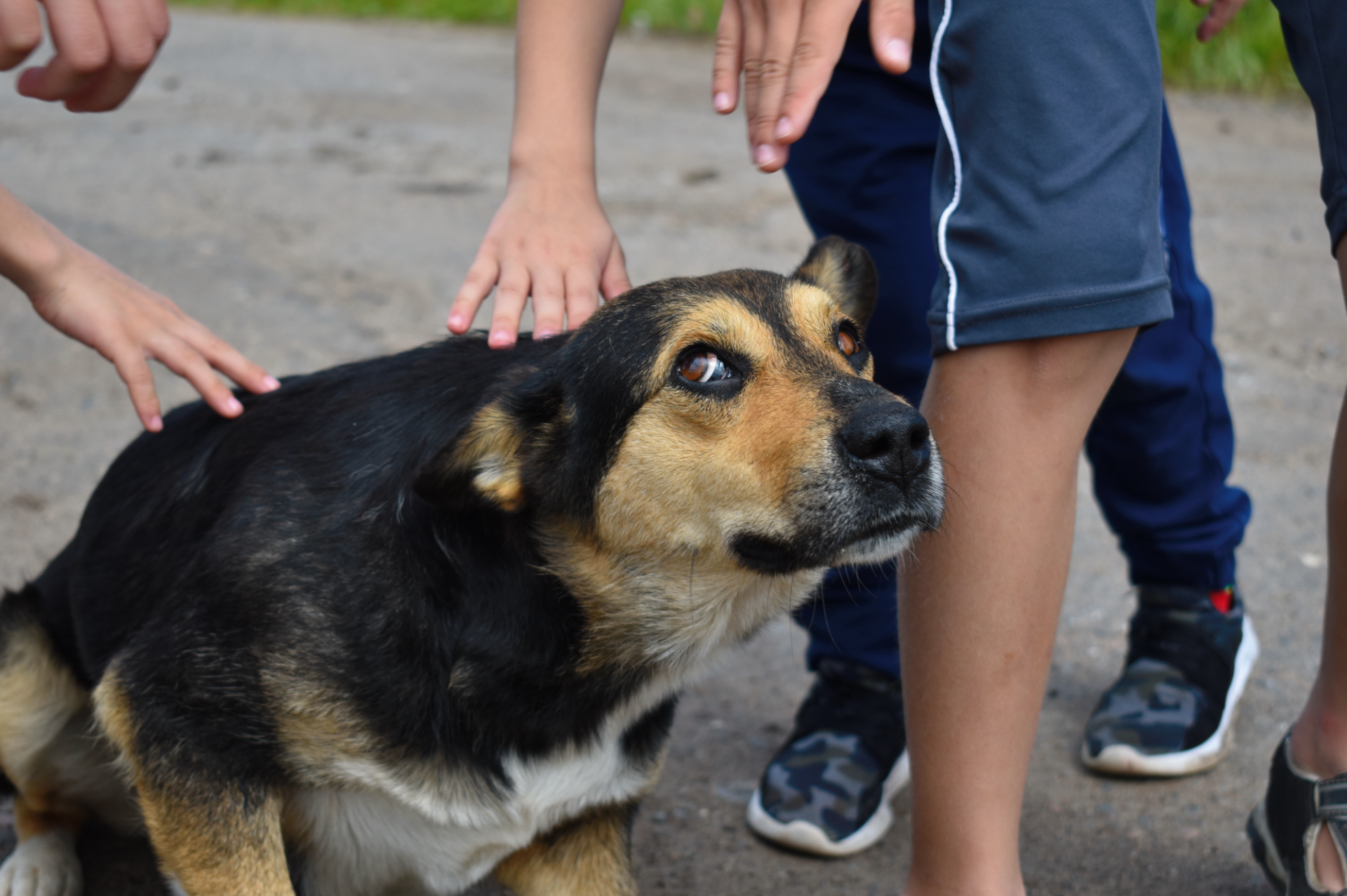It’s not uncommon for dogs to be afraid of different types of people, whether that’s men, children, or strangers. Here’s how to help them navigate their feelings so they can have fear-free walks!
Identify and Understand Your Dog’s Fear
While some dogs think of every stranger as a friend they just haven’t met yet, other dogs believe stranger danger is very real! Some dogs might feel anxious about every new person they meet while others’ fears can be tied to a specific group of people.
Common fears include men, whose larger physique and deeper voices can be intimidating, and children, whose unpredictability and high energy can be alarming. They might also be afraid of specific physical traits, including beards or hats which can change a person’s appearance in a way that dogs don’t quite understand.
Sometimes their fear response is obvious—like if your dog cowers, whines, or runs away from the people in question. However, fearful behavior can come in many different forms! Pay attention to their body language when they encounter new people and watch out for:
- Whining, barking, or other excessive vocalizations
- Growling
- Chomping the air
- Licking their nose or face
- Stress panting
- Exaggerated yawning
- Lip tension or showing their teeth
- Showing the whites of their eyes
- Ears pulled back
- Holding their head low
- Cowering
- Trembling
- Tucking their tail in
- Rolling over to show their belly
- Running away
- Pacing
- Frantic tail chasing
- Anxious urination
- Aggressive snapping or biting
These behaviors and the fears that cause them can stem from several different sources.
Some dogs are genetically predisposed to be more fearful and anxious if their parents were similarly anxious. A timid nature can actually be passed down through the generations! That genetic predisposition can contribute to a fear of strangers, but not a fear of a particular demographic.
Socialization also plays a large part in helping puppies to be comfortable with a range of people and other environmental factors. Missing that key educational period when they’re young can contribute to unfounded fears in adulthood. Basically, if your dog never learned that people with beards are nice when they were a puppy, they’re less likely to trust them as an adult. You can socialize dogs at any age, but progress will likely be slower when you start with an adult dog.
In some cases, dogs can develop these fears from specific traumas that they suffered earlier in life. Understanding the source of your pet’s concerns can help you to give them the best dog training and accommodations to manage their fears!
How to Help Your Dog Overcome Their Fear
Not all dogs are social butterflies, and that’s okay—but it’s important for their well-being that they don’t live with unnecessary fear and anxiety. The goal is to reduce their fear so they can make it through stressful situations with a cool head.
The most popular technique for addressing these fears is a type of behavior modification training called counter conditioning. Just like when humans receive exposure therapy for their phobias, fearful dogs are exposed to the cause of their anxiety in a safe, controlled environment. Then, they receive positive stimulus so they start to form a positive association with the trigger instead of a negative one.
For instance, if your dog is afraid of strangers, you can start by inviting a friend they haven’t met to your home. Have your friend ignore your dog and make sure to avoid direct eye contact with the dog, which can be a threatening behavior for dogs.
Instead, once your dog settles down, your friend should begin to drop a high-value treat on the floor so that your dog realizes that this stranger is non-threatening and—even better—a source of snacks. As they become comfortable with this process, you can introduce new people and try the same technique in new environments until their fears are alleviated.
You can also work with a professional dog trainer to develop the best action plan for your dog. Seeking professional assistance is especially important if you have a dog with extreme fears or who exhibits aggressive behavior when they feel threatened. They can use a variety of training methods to help your dog face their fears in a way that is safe (and bite-free) for everyone involved.
Plus, good obedience training for basic commands can help you manage your dog’s behavior in these situations. If they always come when called, you can redirect them in a moment where they might usually want to show physical aggression or run for the hills.
,

